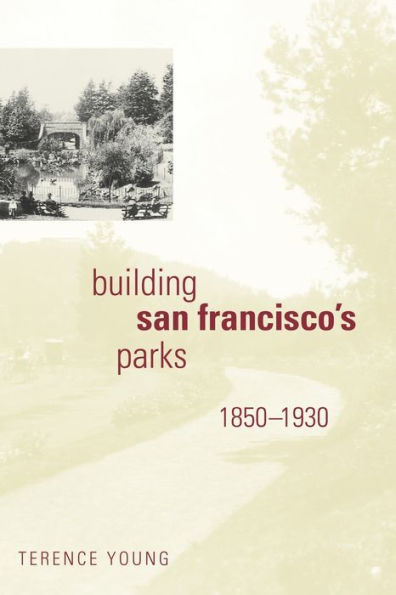In Building San Francisco's Parks, 1850-1930, Terence Young traces the history of San Francisco's park system, from the earliest city plans, which made no provision for a public park, through the private garden movement of the 1850s and 1860, Frederick Law Olmsted's early involvement in developing a comprehensive parks plan, the design and construction of Golden Gate Park, and finally to the expansion of green space in the first third of the twentieth century. Young documents this history in terms of the four social ideals that guided America's urban park advocates and planners in this period: public health, prosperity, social coherence, and democratic equality. He also differentiates between two periods in the history of American park building, each defined by a distinctive attitude towards "improving" nature: the romantic approach, which prevailed from the 1860s to the 1880s, emphasized the beauty of nature, while the rationalistic approach, dominant from the 1880s to the 1920s, saw nature as the best setting for uplifting activities such as athletics and education.
Building San Francisco's Parks, 1850-1930 maps the political, cultural, and social dimensions of landscape design in urban America and offers new insights into the transformation of San Francisco's physical environment and quality of life through its world-famous park system.
In Building San Francisco's Parks, 1850-1930, Terence Young traces the history of San Francisco's park system, from the earliest city plans, which made no provision for a public park, through the private garden movement of the 1850s and 1860, Frederick Law Olmsted's early involvement in developing a comprehensive parks plan, the design and construction of Golden Gate Park, and finally to the expansion of green space in the first third of the twentieth century. Young documents this history in terms of the four social ideals that guided America's urban park advocates and planners in this period: public health, prosperity, social coherence, and democratic equality. He also differentiates between two periods in the history of American park building, each defined by a distinctive attitude towards "improving" nature: the romantic approach, which prevailed from the 1860s to the 1880s, emphasized the beauty of nature, while the rationalistic approach, dominant from the 1880s to the 1920s, saw nature as the best setting for uplifting activities such as athletics and education.
Building San Francisco's Parks, 1850-1930 maps the political, cultural, and social dimensions of landscape design in urban America and offers new insights into the transformation of San Francisco's physical environment and quality of life through its world-famous park system.

Building San Francisco's Parks, 1850-1930
280
Building San Francisco's Parks, 1850-1930
280Paperback(New Edition)

Product Details
| ISBN-13: | 9780801889813 |
|---|---|
| Publisher: | Johns Hopkins University Press |
| Publication date: | 07/04/2008 |
| Series: | Creating the North American Landscape |
| Edition description: | New Edition |
| Pages: | 280 |
| Product dimensions: | 6.00(w) x 8.90(h) x 0.80(d) |
| Age Range: | 18 Years |
